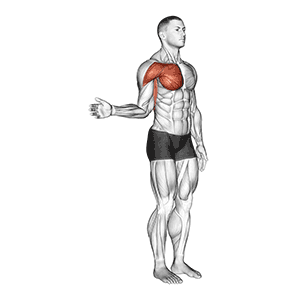 Shoulder strength and flexibility are crucial for athletes, especially baseball players, due to the high demands placed on their shoulder joints during pitching and batting. The repetitive and forceful nature of these movements can lead to significant stress on the shoulder muscles and tendons, making them prone to injuries. Properly strengthening these muscles can improve stability and power, while enhanced flexibility ensures a full range of motion, reducing the risk of strains and tears. This dual focus on strength and flexibility not only helps in injury prevention but also optimizes performance, allowing athletes to throw harder, hit more effectively, and maintain peak physical condition throughout their careers.
Shoulder strength and flexibility are crucial for athletes, especially baseball players, due to the high demands placed on their shoulder joints during pitching and batting. The repetitive and forceful nature of these movements can lead to significant stress on the shoulder muscles and tendons, making them prone to injuries. Properly strengthening these muscles can improve stability and power, while enhanced flexibility ensures a full range of motion, reducing the risk of strains and tears. This dual focus on strength and flexibility not only helps in injury prevention but also optimizes performance, allowing athletes to throw harder, hit more effectively, and maintain peak physical condition throughout their careers.
Improving shoulder endurance and flexibility can help prevent injuries and enhance performance. Endurance training enables the shoulder muscles to sustain prolonged activity without fatigue, which is essential during long games or intense training sessions. Flexibility exercises, on the other hand, maintain and improve the elasticity of the muscles and tendons, ensuring they can handle the dynamic movements required in sports. This article will explore the top three ways to increase shoulder strength and flexibility, backed by scientific research and practical applications, providing athletes with actionable strategies to enhance their shoulder health and overall athletic performance.
Importance of Shoulder Strength and Flexibility
 Definition and Relevance
Definition and Relevance
Shoulder strength refers to the ability of the shoulder muscles to generate force, which is essential for various upper body movements and stability. Flexibility, on the other hand, pertains to the range of motion (ROM) that the shoulder joint can achieve, allowing for smooth and efficient movement patterns. Together, these attributes are critical for maintaining optimal shoulder function. For athletes, particularly those involved in sports like baseball, the demands placed on the shoulder during activities such as pitching and batting are immense. Strong and flexible shoulders can better absorb the stresses of repetitive motions, reducing the risk of injuries and enhancing performance. For the general population, maintaining shoulder strength and flexibility is equally important as it aids in performing daily activities efficiently and can prevent common issues such as shoulder impingements and rotator cuff injuries.
Benefits for Athletes and General Population
For athletes, robust shoulder strength and flexibility translate to improved performance and a lower risk of injury. Strong shoulders contribute to the power and endurance needed for activities like throwing, serving in tennis, or swimming, while flexibility ensures that the joint can move freely without restrictions, allowing for more precise and effective movements. This combination is crucial for sustaining high levels of activity and achieving athletic goals. In the general population, enhancing shoulder strength and flexibility can significantly improve the quality of life. It enables individuals to perform everyday tasks such as lifting, reaching, and carrying objects with ease and confidence. Additionally, a well-maintained shoulder joint can prevent the onset of musculoskeletal problems, leading to fewer injuries and a more active, pain-free lifestyle. Regular exercise that targets shoulder strength and flexibility can thus be a vital part of a holistic approach to health and wellness.
Anatomy of the Shoulder
 Key Muscles Involved
Key Muscles Involved
The shoulder is a complex structure comprising several key muscles that work together to provide strength, stability, and mobility. The primary muscles involved include the deltoid, which is responsible for lifting the arm away from the body; the rotator cuff muscles, which include the supraspinatus, infraspinatus, teres minor, and subscapularis, play a crucial role in stabilizing the shoulder joint and allowing rotational movements. The trapezius and latissimus dorsi muscles also contribute to shoulder movements, especially in activities that involve pulling or lifting. Additionally, the pectoralis major and minor muscles assist in various arm movements and help stabilize the shoulder blade. Each of these muscles must be well-conditioned and flexible to perform their roles effectively and to prevent injuries.
Joint Structure and Function
The shoulder joint, also known as the glenohumeral joint, is a ball-and-socket joint formed by the articulation of the humerus (the upper arm bone) with the glenoid fossa of the scapula (the shoulder blade). This joint structure allows for an extensive range of motion, making it the most mobile joint in the human body. However, this mobility comes at the cost of stability, which is why the surrounding muscles, tendons, and ligaments are so important. The rotator cuff muscles and tendons form a cuff around the shoulder joint, providing the necessary support and stability to keep the humeral head centered in the glenoid cavity during movement. The labrum, a ring of cartilage, further deepens the socket and enhances joint stability. The acromioclavicular joint, formed between the acromion (a part of the scapula) and the clavicle (collarbone), and the sternoclavicular joint, where the clavicle meets the sternum, also contribute to shoulder mechanics, allowing for the elevation and rotation of the scapula, which is crucial for full shoulder mobility. Understanding the structure and function of these components highlights the importance of maintaining both strength and flexibility in the shoulder to ensure optimal performance and prevent injuries.
Common Shoulder Issues
 Injuries and Their Impact
Injuries and Their Impact
Shoulder injuries are prevalent among athletes and can significantly impact performance and quality of life. Some of the most common shoulder injuries include rotator cuff tears, impingement syndrome, shoulder dislocations, and labral tears. Rotator cuff tears occur when one or more of the tendons that make up the rotator cuff become torn, often due to repetitive stress or acute trauma. This injury can cause pain, weakness, and limited range of motion, making it difficult to perform overhead activities.
Impingement syndrome happens when the tendons of the rotator cuff become irritated and inflamed as they pass through the subacromial space, leading to pain and restricted movement. Shoulder dislocations occur when the humeral head is forced out of the glenoid socket, resulting in intense pain and instability. Labral tears involve damage to the cartilage surrounding the shoulder socket, which can cause a catching or locking sensation, along with pain and decreased strength.
These injuries hinder athletic performance and affect daily activities such as lifting, reaching, and carrying objects. Chronic shoulder issues can lead to long-term complications, including arthritis and persistent instability, which may require surgical intervention and extensive rehabilitation.
Prevention and Management
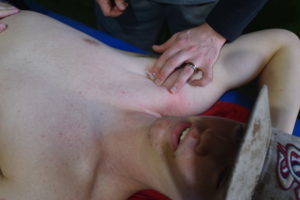 Preventing shoulder injuries involves a combination of strength training, flexibility exercises, and proper technique during physical activities. Strengthening the shoulder muscles, particularly the rotator cuff and scapular stabilizers, can enhance joint stability and reduce the risk of injuries. Regular flexibility exercises, such as stretching and yoga, help maintain a healthy range of motion and prevent tightness that can lead to impingement and other issues.
Preventing shoulder injuries involves a combination of strength training, flexibility exercises, and proper technique during physical activities. Strengthening the shoulder muscles, particularly the rotator cuff and scapular stabilizers, can enhance joint stability and reduce the risk of injuries. Regular flexibility exercises, such as stretching and yoga, help maintain a healthy range of motion and prevent tightness that can lead to impingement and other issues.
Proper warm-up routines before engaging in sports or strenuous activities are essential to prepare the shoulder muscles and tendons for the demands they will face. This can include dynamic stretches, light resistance exercises, and mobility drills to increase blood flow and elasticity.
In addition to physical conditioning, using proper technique and body mechanics during activities is crucial. This includes ensuring correct posture, avoiding overuse, and using appropriate equipment to minimize stress on the shoulder joint.
When injuries do occur, early diagnosis and treatment are vital for effective management and recovery. Treatment options may include rest, ice, anti-inflammatory medications, and physical therapy to restore strength and flexibility. In more severe cases, surgical interventions such as arthroscopy or rotator cuff repair may be necessary.
Physical therapy plays a crucial role in rehabilitation, focusing on restoring normal function, reducing pain, and preventing future injuries. A tailored rehabilitation program that includes strength training, stretching, and functional exercises can help athletes and individuals regain their shoulder health and return to their activities with confidence.
By understanding common shoulder issues and implementing preventive measures, individuals can maintain shoulder health, reduce the risk of injuries, and ensure long-term functionality and performance.
Top 3 Ways to Increase Shoulder Strength and Flexibility
 Strengthening Exercises
Strengthening Exercises
Resistance Training
Resistance training is a fundamental component of improving shoulder strength. This type of training involves using weights, resistance bands, or body weight to create resistance against which the muscles must work. For the shoulders, exercises such as shoulder presses, lateral raises, front raises, and rows are highly effective. These exercises target different parts of the shoulder, including the deltoids and the rotator cuff muscles, helping to build strength and stability. Incorporating resistance training into a regular fitness routine can significantly enhance muscle mass, endurance, and overall shoulder function.
Specific Exercises for Shoulder Muscles
Focusing on specific exercises that target the shoulder muscles can yield substantial benefits. Rotator cuff exercises, such as external rotations with resistance bands or dumbbells, are crucial for maintaining shoulder health and preventing injuries. Overhead presses and Arnold presses are excellent for building the deltoid muscles, while bent-over lateral raises target the posterior deltoids and upper back. Incorporating a variety of exercises ensures that all parts of the shoulder are strengthened, promoting balanced muscle development and joint stability.
Case Study: Preseason Training Program
A 20-week preseason training program designed for high school baseball players demonstrated significant improvements in shoulder strength and endurance. The program included three supervised training sessions per week, focusing on upper extremity strengthening exercises. Participants showed notable increases in muscular endurance, with posterior shoulder endurance improving from an average of 30 repetitions at baseline to 88 repetitions after 20 weeks. This case study highlights the effectiveness of a structured, progressive resistance training program in enhancing shoulder strength and preventing injuries in athletes.
Flexibility Exercises
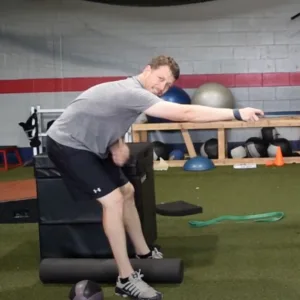 Stretching Techniques
Stretching Techniques
Stretching exercises are essential for maintaining and improving shoulder flexibility. Techniques such as static stretching, where a stretch is held for a prolonged period, and dynamic stretching, which involves moving through a range of motion, are both beneficial. For the shoulders, stretches such as cross-body arm stretches, doorway stretches, and the sleeper stretch can help improve flexibility and prevent tightness. Regular stretching keeps the muscles and tendons supple, allowing for greater range of motion and reducing the risk of injuries.
Dynamic vs. Static Stretching
Dynamic stretching is particularly useful before physical activities as it warms up the muscles and prepares them for the demands of exercise. Examples include arm circles, shoulder swings, and dynamic chest stretches. Static stretching, on the other hand, is more beneficial post-exercise as it helps to cool down the muscles and improve flexibility. Both types of stretching are important and should be incorporated into a comprehensive shoulder training program.
Case Study: Instrument-Assisted Soft Tissue Mobilization
A study involving baseball players with shoulder range of motion (ROM) deficits showed that instrument-assisted soft tissue mobilization (IASTM) combined with self-stretching led to significant improvements in shoulder flexibility. Participants who received IASTM showed greater ROM gains compared to those who performed self-stretching alone. The study concluded that reducing rotator cuff stiffness through techniques like IASTM can be highly effective in enhancing shoulder flexibility and function. This approach can be particularly beneficial for athletes who require optimal shoulder mobility for performance.
Endurance Training
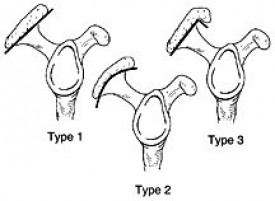 Importance of Muscular Endurance
Importance of Muscular Endurance
Muscular endurance refers to the ability of muscles to sustain repeated contractions over an extended period. For the shoulder, endurance is crucial, especially in sports that involve repetitive overhead movements such as baseball, tennis, and swimming. High muscular endurance allows the shoulder muscles to perform efficiently for longer durations without fatiguing, which is essential for both performance and injury prevention.
Training Routines
Endurance training for the shoulders can involve high-repetition resistance exercises and sustained isometric holds. Exercises such as shoulder presses with lighter weights, high-repetition rotator cuff exercises, and plank variations can help build endurance. Incorporating these exercises into a regular training routine can enhance the ability of the shoulder muscles to sustain prolonged activity and reduce the risk of overuse injuries.
Case Study: Posterior Shoulder Endurance Improvement
Research on a group of adolescent baseball players highlighted the importance of endurance training in improving shoulder function. Over a 20-week training period, participants engaged in specific endurance exercises designed to strengthen the posterior shoulder muscles. The results showed a significant improvement in muscular endurance, with the number of repetitions increasing from 30 to 88. This case study underscores the effectiveness of targeted endurance training in enhancing shoulder durability and performance, particularly in athletes.
By integrating strengthening exercises, flexibility routines, and endurance training into a comprehensive shoulder program, athletes and individuals can significantly improve their shoulder strength, flexibility, and overall function. This holistic approach not only enhances performance but also plays a critical role in injury prevention and long-term shoulder health.
Implementing a Shoulder Strength and Flexibility Program
 3X Pitching Velocity Program Shoulder Routine
3X Pitching Velocity Program Shoulder Routine
Implementing an effective shoulder strength and flexibility program is essential for athletes, particularly pitchers, to enhance performance and reduce the risk of injury. The 3X Pitching Velocity Program includes a comprehensive shoulder routine designed to target the small, intricate muscles of the shoulder, such as the rotator cuff, without overloading them. Here's a detailed look at the shoulder routine included in this program:
Equipment Needed:
To perform these exercises, you will need 3 to 5-pound weights. It is recommended to start with 3-pound weights and, after a few months, if desired, gradually increase to 5 pounds. It is important not to exceed 5 pounds, as the rotator cuff muscles are small and can only handle a limited amount of weight before the larger deltoid muscles start to dominate the movement, which can undermine the effectiveness of the exercises and increase the risk of injury.
Shoulder Routine:
- Circle Curls:
- Perform 10 repetitions for 3 sets.
- This exercise involves holding the weights in your hands and making circular motions, engaging both the biceps and shoulder muscles.
- Thumb Ups and Downs:
- Perform 10 repetitions for 3 sets.
- With your arms extended and weights in hand, rotate your thumbs upwards and downwards, focusing on the shoulder's range of motion and stability.
- Shoulder Extension:
- Perform 10 repetitions for 3 sets.
- Standing or sitting with a straight back, extend your arms straight back with weights, engaging the posterior shoulder muscles.
- Up and Outs:
- Perform 10 repetitions for 3 sets.
- Lift the weights upwards and then move them outwards to the side, working on the deltoids and rotator cuff muscles.
- Windmills:
- Perform 10 repetitions for 3 sets.
- With arms extended and weights in hand, make windmill-like circular motions, engaging various shoulder muscles and improving mobility.
- Lawnmowers:
- Perform 10 repetitions for 3 sets.
- Mimic the motion of starting a lawnmower, pulling the weight diagonally across your body, which targets the shoulder and upper back muscles.
- Bent Up and Outs:
- Perform 10 repetitions for 3 sets.
- Bent over slightly, lift the weights up and out to the sides, focusing on the rear deltoids and upper back.
- External Rotation Positive:
- Perform 10 repetitions for 3 sets.
- With your elbow bent at 90 degrees and tucked into your side, rotate your forearm outward against resistance, strengthening the external rotators of the shoulder.
- External Rotation Negative:
- Perform 10 repetitions for 3 sets.
- Similar to the positive rotation but focusing on the controlled return to the starting position, enhancing the eccentric strength of the rotator cuff muscles.
- External Rotation Cross:
- Perform 10 repetitions for 3 sets.
- With the arm extended in front, rotate it outward and back across the body, focusing on the shoulder's external rotation and stability.
By following this structured routine, athletes can improve their shoulder strength and flexibility, ensuring that the rotator cuff muscles are adequately developed to handle the demands of pitching. This routine helps in building endurance and preventing injuries by targeting the specific muscles involved in shoulder stability and movement. Consistency and proper form are key to achieving the best results and maintaining shoulder health.
3X Pitching Velocity Program
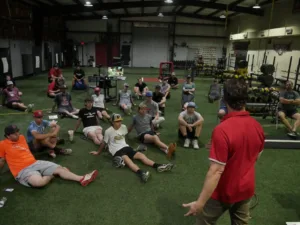 The 3X Pitching Velocity Program is a comprehensive training system designed to help pitchers increase their pitching speed while reducing the risk of injury. Developed through years of research and practical application, this program focuses on enhancing the mechanics, strength, and conditioning specific to pitching. By integrating advanced training techniques, it aims to maximize an athlete's potential on the mound.
The 3X Pitching Velocity Program is a comprehensive training system designed to help pitchers increase their pitching speed while reducing the risk of injury. Developed through years of research and practical application, this program focuses on enhancing the mechanics, strength, and conditioning specific to pitching. By integrating advanced training techniques, it aims to maximize an athlete's potential on the mound.
Key Components of the 3X Pitching Velocity Program
- Biomechanical Optimization: The program emphasizes the importance of proper pitching mechanics. By analyzing and refining an athlete's biomechanics, the program helps pitchers achieve more efficient movements, which can lead to increased velocity and better overall performance. This includes techniques for improving stride length, hip rotation, and arm action.
- Strength and Conditioning: A critical aspect of the 3X Pitching Velocity Program is its strength and conditioning regimen. The program includes exercises specifically designed to target the muscles used in pitching, such as the rotator cuff, core, and lower body. These exercises help build the necessary power and endurance required for high-velocity pitching.
- Flexibility and Mobility: To complement strength training, the program incorporates flexibility and mobility exercises. These exercises ensure that the shoulder and other joints involved in pitching maintain a healthy range of motion, reducing the risk of injury and enhancing overall performance.
- Nutrition and Recovery: Proper nutrition and recovery are essential components of the program. Athletes are guided on the best dietary practices to support intense training and optimal performance. Additionally, recovery strategies, including rest and rehabilitation exercises, are integrated to prevent overuse injuries and maintain peak physical condition.
- Mental Conditioning: The program also addresses the mental aspect of pitching. Techniques for improving focus, confidence, and resilience under pressure are taught to help pitchers maintain their composure and perform at their best during games.
 Are you ready to take your pitching to the next level? The 3X Pitching Velocity Program has helped countless pitchers achieve their goals, from increasing their pitching speed to reducing their injury risk. Whether you're a high school athlete aiming for a college scholarship or a professional player looking to enhance your career, this program offers the tools and training you need to succeed.
Are you ready to take your pitching to the next level? The 3X Pitching Velocity Program has helped countless pitchers achieve their goals, from increasing their pitching speed to reducing their injury risk. Whether you're a high school athlete aiming for a college scholarship or a professional player looking to enhance your career, this program offers the tools and training you need to succeed.
Don't let your potential go untapped. Join the 3X Pitching Velocity Program today and start your journey towards becoming an elite pitcher. Visit our website to learn more about the program, read testimonials from successful athletes, and sign up for your personalized training plan.
Get started now and see the difference the 3X Pitching Velocity Program can make in your performance. Click here to learn more and enroll today!
For more exclusive content visit the TopVelocity Patreon!


 Definition and Relevance
Definition and Relevance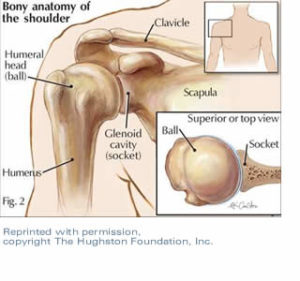 Key Muscles Involved
Key Muscles Involved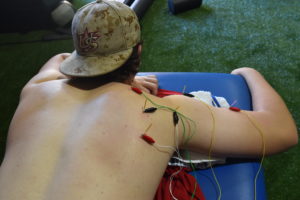 Injuries and Their Impact
Injuries and Their Impact Strengthening Exercises
Strengthening Exercises 3X Pitching Velocity Program Shoulder Routine
3X Pitching Velocity Program Shoulder Routine

